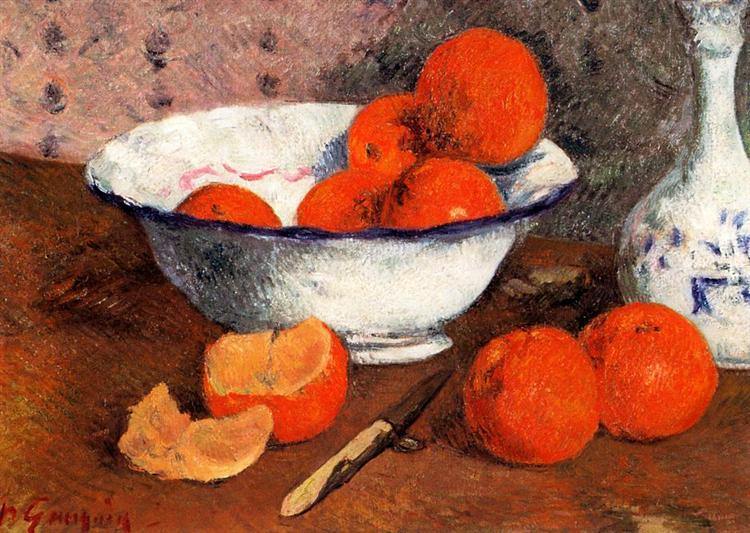Description
Paul Gauguin's Still Life With Oranges is a masterpiece of Post-Impressionism that has captivated art lovers for more than a century. This painting, created in 1889, is a perfect example of Gauguin's artistic style, characterized by his bold use of color and his focus on simplicity and purity.
The composition of the painting is impressive. Gauguin uses a diagonal perspective to create a sense of depth and movement in the image. The oranges, arranged in a triangular pattern, are the focal point of the painting and are surrounded by a variety of everyday objects, such as a ceramic pitcher and a carved wooden plate.
Color is another outstanding aspect of this work. Gauguin uses a palette of bright, saturated colors to create a sense of vitality and energy in the painting. The warm tones of the oranges contrast with the cool tones of the surrounding objects, creating a visual balance that is both harmonious and dynamic.
The story behind this painting is fascinating. Gauguin created it during his time in Tahiti, where he sought to escape urban life and find inspiration in nature and local culture. Still Life With Oranges is one of the many paintings Gauguin created during this period, reflecting his fascination with the simplicity and beauty of everyday life.
There are many little-known aspects of this painting that make it even more interesting. For example, Gauguin is believed to have used a painting technique called "flat painting," in which objects are rendered as flat shapes without shadows to create a sense of simplicity and purity. Additionally, it has been suggested that the ceramic jug in the painting is a reference to Polynesian culture, which Gauguin was exploring at the time.

